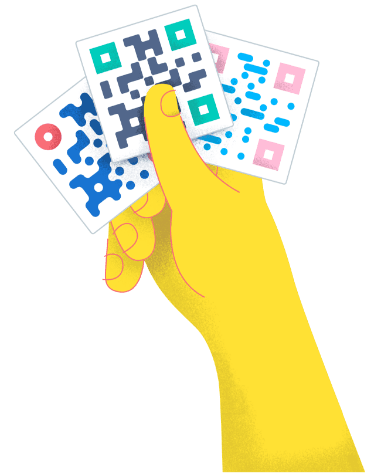- Best Practices ●
- COVID-19 ●
- Industry Trends ●
- Partners ●
- Product ●
How QR Codes Work (+ a Quick Lesson in QR Code History)
QR Codes have become an undeniable force in today’s digital landscape. From product packaging to billboards, these pixelated squares have changed the way we connect and engage with the world around us.
Although QR Codes have been around for decades, their popularity surged in 2017 when Apple and Google enabled built-in scanning on mobile devices. Brands quickly embraced the use of QR Codes as a tool to drive instant consumer interaction. Today, these codes play a key role in modern marketing, making everything from contactless payments to interactive experiences more seamless and accessible.
In this article, we’ll explore how QR Codes work and their rise to prominence, and share creative ways to use them in both your personal and professional life.
*Note: All brands and examples discussed below were found during our online research for this article.
-
Table of contents
- What is a QR Code?
- The history of QR Codes
- How do QR Codes work?
- 7 ways to use QR Codes
What is a QR Code?
A QR Code, short for Quick Response Code, is a two-dimensional barcode that stores information in a pixelated, square-shaped pattern. When scanned with a smartphone or mobile device, it quickly directs users to the information it’s linked to—whether a website, an app, a menu, or an RSVP form.
While typically seen in their classic black-and-white form, QR Codes can be customized with a variety of designs and colors, giving businesses a creative edge in how they use them. Whether you’re adding brand colors, incorporating a logo, or experimenting with a unique shape, these customization options allow QR Codes to align seamlessly with your brand identity.
And it’s not just about aesthetics—QR Codes are a powerful tool for engagement. You can drive customers to a limited-time offer, boost your social media following, or provide instant access to important content—all while creating a fast, intuitive experience that enhances customer interactions.
The structure of a QR Code
QR Codes are composed of seven key parts, and together, they work like the pieces of a puzzle:
- Position markers
- Alignment markers
- Timing pattern
- Version information
- Format information
- Data and error correction keys
- Quiet zone
Each pixel plays an important role. For example, alignment markers—the small squares with dots in the middle—help your device figure out the QR Code’s orientation and size. Meanwhile, the black-and-white modules running horizontally and vertically through the center act as a timing pattern, allowing the scanner to interpret the code accurately.
The code also includes format information, which allows it to be scanned even if it’s damaged or slightly distorted. Finally, the quiet zone (the white background) defines the boundaries of the code, helping the scanner process it smoothly and correctly.
Static vs. Dynamic QR Codes
Now that you understand how a QR Code works, let’s look at the two main types: Static and Dynamic QR Codes. Each has its unique advantages, depending on your needs.
- Static QR Codes contain fixed information that can’t be changed once they’re created. For example, a Static QR Code would be perfect if you’re printing a code for a specific event, like a one-time conference or trade show. It permanently links to one URL, so it’s ideal when you don’t need to update the information later.
- Dynamic QR Codes offer more flexibility. These allow you to update the information linked to the code even after it’s printed, making them a practical choice for situations where details might change over time. For instance, if you’re promoting a recurring event, you can use the same code and simply change the destination link as needed, without the hassle of reprinting the code or materials.
Dynamic QR Codes also come with added perks, like actionable analytics. You can track how many people have scanned the code, where they were located, and what device they used. These insights provide a clearer picture of how people engage with your content, helping you save time, refine your marketing efforts, and boost your ROI.
QR Code alternatives
While most people are familiar with standard Static QR Codes, there are actually several variations, each designed for different uses. Similar to barcodes, these codes hold information about products, events, and more. However, unlike barcodes, which only store information in a single direction (horizontally), QR Codes can hold data both horizontally and vertically—making them far more versatile and robust.
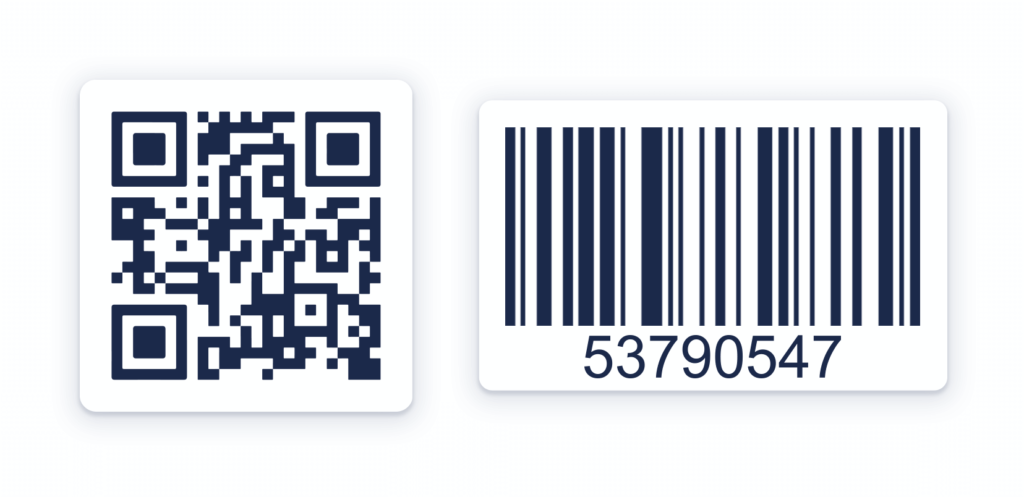
Here are a few popular alternatives to the traditional QR Code:
- Micro QR Codes: Perfect for smaller items with limited space, Micro QR Codes offer a compact solution for storing essential information. While they hold less data than standard codes, they’re ideal when only a small amount of information needs to be encoded.
- iQR Codes: Need to hold even more data? iQR Codes can hold significantly more information than traditional codes, making them a great option for more complex use cases.
- FrameQR: Looking for something more creative? FrameQR Codes allow for customization, giving you the flexibility to personalize both the design and the information you store.
The history of QR Codes
QR Codes might feel like a modern invention, but they’ve been around longer than you’d expect. Traditional barcodes could only hold about 20 alphanumeric characters of information and could only be read in one direction. This created challenges for industries looking for faster, more efficient tracking systems.
That’s where Masahiro Hara, a lead developer at DENSO WAVE, stepped in. In 1994, he invented the QR Code—a 2D barcode that could store significantly more data and be scanned from any angle. Initially designed to track parts in Japan’s automotive industry, QR Codes quickly spread to other sectors, such as food and pharmaceuticals, for better product traceability.
In 2000, QR Codes were recognized as an international standard, propelling them into the global spotlight. However, it wasn’t until 2017, when Apple’s iOS 11 update allowed iPhone users to scan QR Codes directly with their phones, that these codes truly went mainstream. Since then, they’ve become an essential tool for businesses worldwide.
How do QR Codes work?
Have you ever wondered how QR Codes are generated? To understand the magic behind them, it helps to know how scanners interpret the unique language of a QR Code.
How to scan a QR Code
Scanning a QR Code is as simple as opening your camera app and pointing your smartphone at the code. Most Android and iPhone devices have this feature built into their operating systems, so when the QR Code appears in the camera’s viewfinder, your phone will automatically detect and scan it. From there, you’ll be directed to the link or content associated with the code.
If your phone doesn’t automatically scan the code, you can always download a free barcode scanner app from your device’s app store to get the job done quickly and easily.
How QR Code decoding works
When your phone or app scans a QR Code, it decodes the information stored in the data region of the code. The scanner processes this data and presents the content to you—whether it’s a link, menu, or app download.
Meanwhile, error correction algorithms retrieve information from any damaged or dirty parts of the code, ensuring the full content is available even if the code isn’t in perfect condition.
How to use QR Codes safely
The first half of 2023 saw a 41% growth in global QR Code creations compared to the same period of 2022. But are QR Codes safe?
In general, these codes remain a reliable and convenient way to connect users with resources. However, it’s important to stay cautious. QR Codes can sometimes be linked to malicious websites that host viruses, malware, or phishing scams. Scammers may exploit consumers’ trust in QR Codes, disguising harmful links behind what looks like a legitimate code.
This is why QR Code Generator has invested significantly in trust and safety over the years. We’ve built proprietary technology to detect and mitigate threats, and we’ve partnered with industry-leading organizations to ensure alignment with industry best practices. We also have a robust network of trusted partners that helps identify and respond to potentially harmful QR Codes faster.
In addition to the safety measures we’ve implemented, you can also take steps to protect yourself. Implementing authentication methods, such as verifying the source of the code before scanning, can also help mitigate these risks. Using a reputable QR Code reader or your phone’s built-in camera app, along with your device’s security features, will further enhance safety when interacting with QR Codes.
7 ways to use QR Codes
QR Codes are incredibly versatile, offering more possibilities than you might expect. Below are a few creative ways you can put them to use.
1. For business

QR Codes have become a popular feature for business cards, offering professionals a quick, convenient way to share contact information—whether at a networking event or speaking to a group.
Instead of carrying stacks of paper cards, vCard QR Codes let you store business card details directly on your smartphone.
Another benefit of using QR Codes for business cards is that you’re not limited by space. Potential clients or partners can easily access your social media profiles, contact details, or even book an appointment—all from a single scan.
2. On product packaging

Many companies use QR Codes on product packaging to help consumers learn more about their products or offer special incentives without cluttering the design. A seasonal product might feature a PDF QR Code to share special holiday recipes, or a Social Media QR Code to boost followers.
Smart Packaging QR Codes are also becoming popular, turning packaging into interactive experiences and encouraging customers to share product feedback in exchange for valuable information or exciting offers.
3. In healthcare
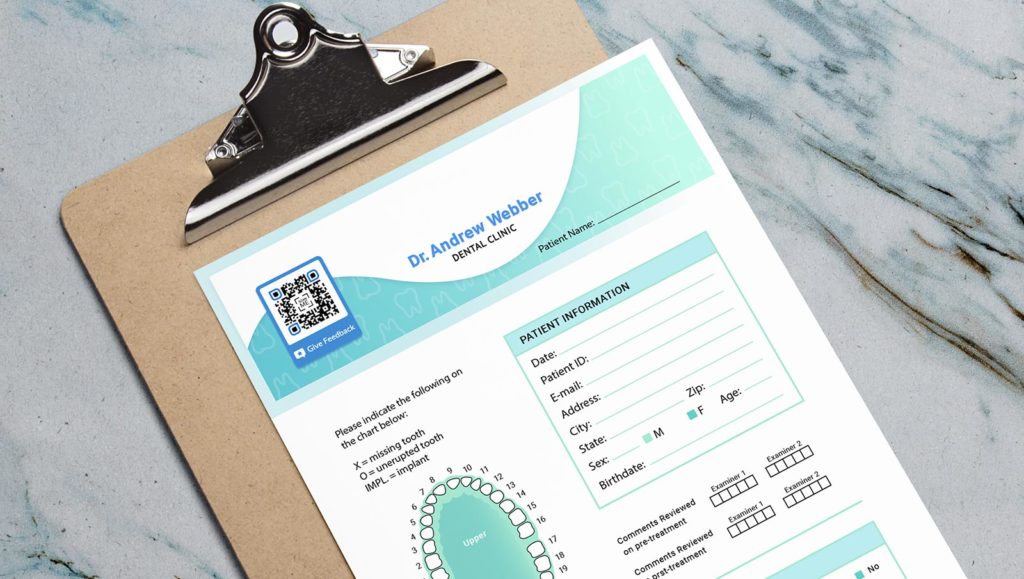
QR Codes are becoming essential in healthcare, helping organizations collect patient feedback using Feedback QR Codes. After an appointment, medical offices can automatically send these surveys through their booking systems, allowing patients to complete them at their convenience.
Since the pandemic, QR Codes have become more common across industries, including healthcare. Beyond feedback collection, they’re also used to educate patients. You’ll often find them in waiting rooms and exam rooms, where they provide information on disease prevention and treatment options while patients wait.
4. At home
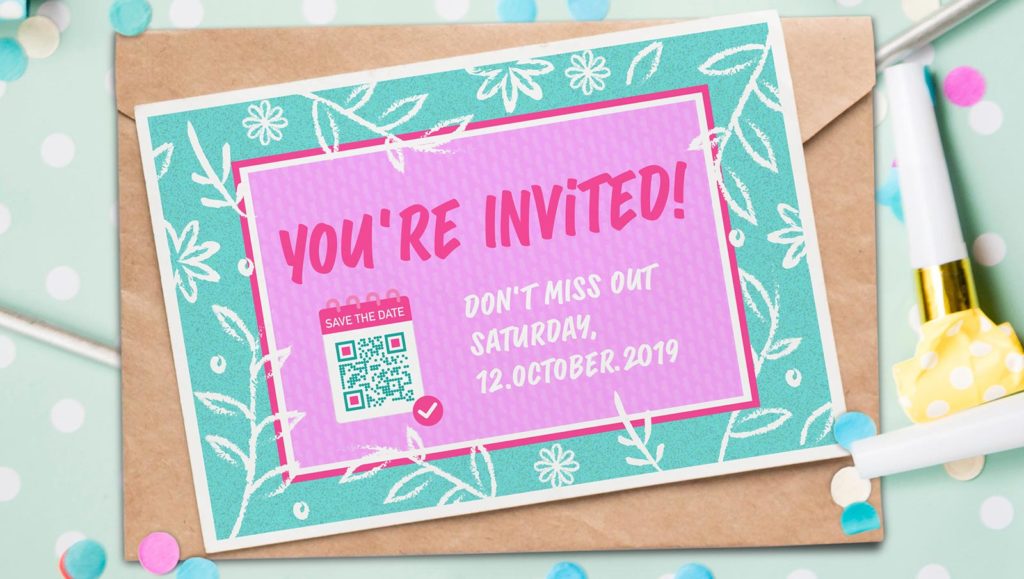
Planning an event like a surprise birthday party? An Event QR Code can simplify RSVPs by directing attendees to an online form with all the party details. Guests can easily let you know if they’re attending and even add the event to their calendars in just a few clicks.
And if you’re tired of reciting your WiFi password to every guest, create a WiFi QR Code. This way, they can connect to your network instantly without the hassle of typing. For added convenience, consider using QR Code labels to display the code in a visible spot, making it easy for everyone to access the internet.
5. In the gym
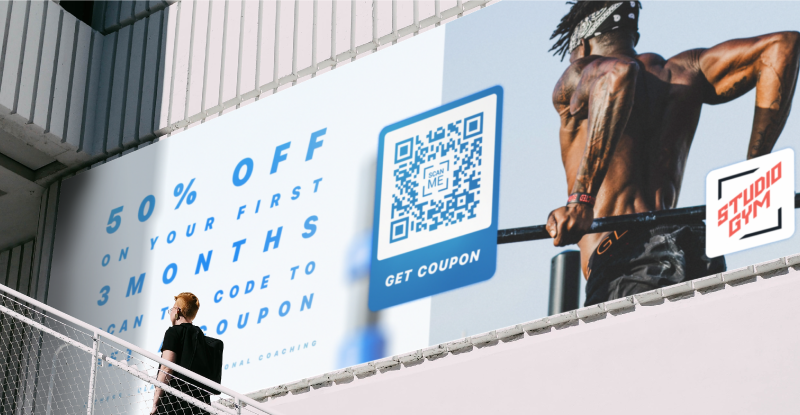
Gyms often use Coupon QR Codes to attract new members, especially during peak times like New Year’s. By combining coupon marketing with QR Codes, gyms can create engaging promotions that direct users to special offers or sign-up pages instantly. For example, a gym might include a code in print ads or social media graphics, making it easy for potential members to scan and take advantage of a limited-time deal.
Gyms like Planet Fitness use QR Codes to enhance the workout experience. Members can scan codes on gym equipment to access instructional videos and tips directly through the Planet Fitness app, helping them make the most of their workouts.
6. In restaurants and on menus
The pandemic changed the dining experience, and contactless solutions in restaurants are here to stay. No-touch ordering and payment options remain popular, even as in-person dining restrictions have been lifted.
With QR Codes, restaurants eliminate the headache of maintaining and updating paper menus. Digital menus are easier to manage, and any customer with a smartphone can quickly access them by scanning a QR Code—no need to wait for their server.
7. Facilitate payments
QR Codes make payment processing quick and easy. Vendors at farmers’ markets, for example, can use a QR Code to link directly to their Venmo account for fast transactions.
Similarly, companies that provide home services, like HVAC or plumbing, can offer a Digital Payment QR Code to customers once a job is completed, making it easy for them to pay on the spot, even if they don’t have their wallet handy.
Elevate your business with a reliable, customizable QR Code generator
QR Codes are one of the fastest ways to connect customers to a webpage or process a payment. They’re easy to create, simple to display, and offer a reliable way for customers to engage with your business—especially when 40% of global QR Code scans come from marketing campaigns. Because of their small size, QR Codes can be placed just about anywhere, from product packaging to outdoor ads. Their versatility means you can use them across virtually any industry.
With QR Code Generator PRO, the process is simple. Just select the type of QR Code you want to generate, enter your website URL, and then customize the design to fit your brand—adjusting the shape, color, and frame. You can even add your logo for a personal touch.
But it doesn’t stop at design—QR Code Generator PRO provides robust features that go beyond customization. You’ll gain actionable insights on your code scans, tracking where and how often your codes are scanned, helping you better understand customer behavior and optimize your marketing efforts.
Curious about maximizing the effectiveness of your own campaigns with QR Codes? Get started with a free QR Code Generator PRO trial today!
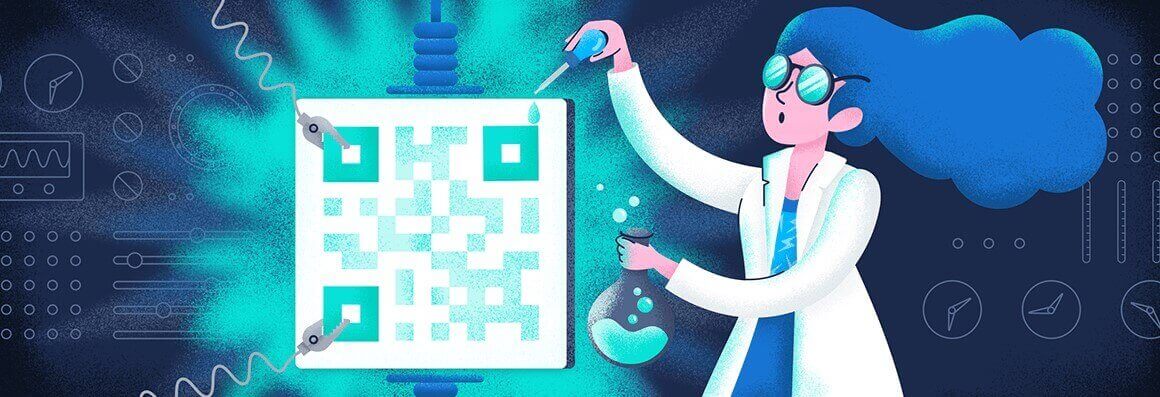





 Add custom colors, logos and frames.
Add custom colors, logos and frames.

